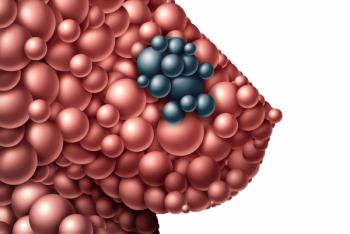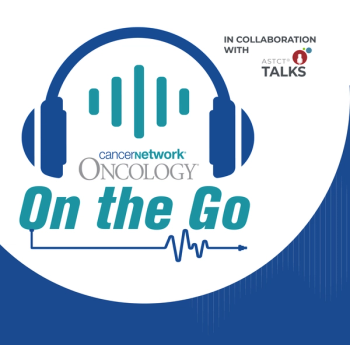
Alina Markova, MD, on Key Findings With Topical Ruxolitinib in Cutaneous Chronic GVHD
Alina Markova, MD, highlights important findings from a study assessing topical ruxolitinib INCB018424 phosphate 1.5% cream as a treatment for non-sclerotic and superficially sclerotic chronic cutaneous graft-versus-host disease.
In an interview with CancerNetwork® during the
Findings from the study indicated that topical ruxolitinib was effective in treating GVHD by both composite assessment of index lesion disease severity (CAILS) and physician’s global assessment (PGA) of clinical condition. Patients treated with the experimental treatment saw improvements compared with the vehicle cream; the secondary end points of CAILS and PGA at day 14 and 18 showed a positive trend favoring topical ruxolitinib, measured by body surface area of GVHD rash.
Transcript:
Our total accrual is 24 patients—we’ve accrued 20 of 24—[and] these results reflect the first 11 patients. [There were] 2 [key findings] that we presented at the meeting. The first is that we noticed a trend in [GVHD] body surface area reduction in the patients who are treated with ruxolitinib vs those who are treated with vehicle. We saw statistically significant improvements in physician’s global assessment—so the physician’s blinded assessment of the patients’ cutaneous improvement, stabilization, or worsening—in the ruxolitinib group vs the vehicle group.
Also, we used another metric called the CAILS. This CAILS score includes erythema, scaling, itch, and the body surface area. We also saw statistically significant improvements in [this measure for] patients who used the ruxolitinib cream vs those treated with the vehicle cream. We did see that our secondary outcomes were met [and with] our primary outcome, there was a [positive] trend. We hope that in our complete analysis that we find significance in that, as well. Additionally, we performed skin stripping, which looks at an RNA signature in these patients who have responded to topical ruxolitinib vs those who didn’t. We found a genomic signature in responders that differed from nonresponders, possibly due to differences in Th1/Th2 cell differentiation and keratinization pathways.
Reference
Markova A, Prockop SE, Dusza S, et al. Interim results of a pilot, prospective, randomized, double-blinded, vehicle-controlled trial on safety and efficacy of a topical inhibitor of Janus kinase 1/2 (ruxolitinib INCB018424 phosphate 1.5% cream) for non-sclerotic and superficially sclerotic chronic cutaneous graft-versus-host disease. Presented at: 2022 Transplantation & Cellular Therapy Meetings; Salt Lake City, UT; April 23-26, 2022. Abstract 390.
Newsletter
Stay up to date on recent advances in the multidisciplinary approach to cancer.





